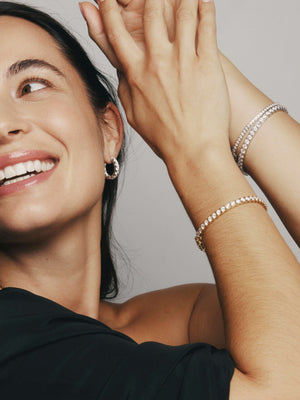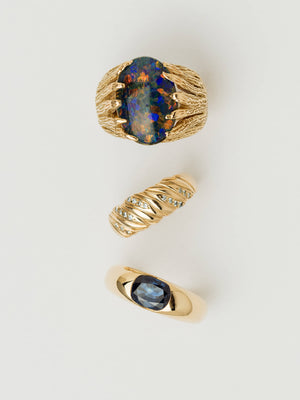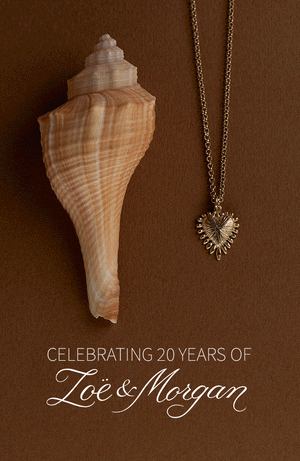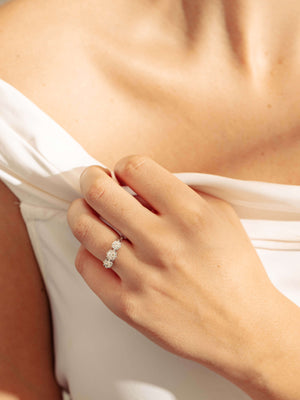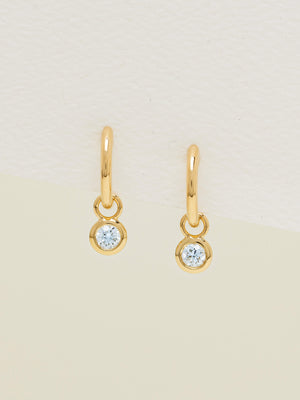Diamonds have fascinated and captivated us for centuries with their timeless beauty and enduring allure. Yet, beyond their intrinsic rarity and dazzling sparkle, diamonds possess a hidden characteristic that can significantly influence their appearance—fluorescence.
But what is the meaning of fluorescent diamonds? In the world of gemmology, fluorescence refers to the mesmerising display of colour that some diamonds emit when exposed to ultraviolet (UV) light. This phenomenon ranges from subtle to striking, with blue fluorescence being the most common. While fluorescence can enhance a diamond's beauty, it can also present unique challenges, particularly in larger stones.
We embark on a journey to help you understand the intricacies of the diamond fluorescence scale and why clarity becomes a paramount consideration with large diamonds. Whether you're a seasoned diamond connoisseur or a novice, this guide will help you choose the perfect diamond from jewellery shops in NZ.
What is Diamond Fluorescence?
At its core, diamond fluorescence is a captivating optical phenomenon that occurs when a diamond emits visible light in response to ultraviolet (UV) light exposure. Think of it as nature's own light show hidden within these precious gems.
When exposed to UV light, such as sunlight or certain artificial lighting, diamonds with fluorescence can emit a soft, enchanting glow. The most prevalent fluorescence colour is a delicate blue, which can lend the diamond a unique character. However, fluorescence can also manifest in other hues like green, yellow, or even red, depending on the presence of specific trace elements within the diamond's crystal lattice.
For generations, this enchanting effect has intrigued gemmologists, jewellers, and diamond enthusiasts, leading to a dedicated grading scale for assessing the strength and presence of fluorescence in diamonds.
The Diamond Fluorescence Scale
Gemmological laboratories such as the Gemmological Institute of America (GIA) employ a standardised grading scale to effectively evaluate and communicate the presence and intensity of fluorescence in diamonds.
This scale categorises fluorescence into several levels: "None," "Faint," "Medium," "Strong," and "Very Strong." Each level indicates the degree to which a diamond exhibits fluorescence under UV light.
Understanding the diamond fluorescence scale is crucial for jewellers and diamond buyers, as it provides valuable insights into the diamond's unique characteristics. While fluorescence can add enchantment to a diamond's appearance, it can also pose challenges, especially when it comes to larger stones where clarity becomes paramount.
Evaluating the Impact of Fluorescence
The impact of fluorescence largely depends on a few factors, including the strength of fluorescence, the diamond's colour grade, and the lighting conditions in which it appears.
Enhancement in Certain Lighting
The effect can be quite enchanting, particularly with diamonds exhibiting blue fluorescence. Blue fluorescence can make a diamond appear whiter and brighter when exposed to natural daylight or UV-rich lighting. This occurs because the blue fluorescence offsets the subtle yellowish tint that naturally occurs in many diamonds, thus enhancing their colourless appearance.Mixed Lighting Environments
We see diamonds in countless lighting conditions, ranging from sunlight to artificial indoor lighting. In mixed lighting environments, the impact of fluorescence may vary, with the diamond appearing differently depending on the lighting source. This variability can make diamonds with fluorescence intriguing and unique, appealing to those who appreciate these gemstones’ ever-changing character.Potential for Hazy Appearance
In rare cases, diamonds with strong or very strong fluorescence may exhibit a hazy or milky appearance, particularly under intense UV light. This haziness can reduce the transparency of the diamond, impacting its brilliance and overall appeal. As such, diamonds with such intense fluorescence may be less valuable. However, this appears in approximately only .02% of diamonds submitted to GIA.Intriguingly, the impact of fluorescence can be quite subjective, with personal preferences playing a significant role in determining whether a fluorescent diamond is appealing. Some individuals adore the captivating glow of a fluorescent diamond, while others may prefer the consistent brilliance of non-fluorescent stones. In the quest for the perfect diamond, understanding these nuances becomes crucial.
Clarity in Large Diamonds
As we explore the intricate world of diamonds and their fascinating characteristics, it becomes evident that size matters—especially regarding clarity. Large diamonds, with their expansive facets and grandeur, are the crowning jewels of any collection. However, with increasing size comes an intensified scrutiny of the diamond's internal characteristics, known as inclusions. Though often minuscule, these internal flaws can impact a diamond's clarity and, consequently, its value. What makes clarity even more critical in large diamonds is the interaction between these inclusions and the phenomenon of fluorescence.
Picture a large diamond as a magnificent canvas upon which the story of its formation is written in the form of tiny, naturally occurring birthmarks. These inclusions, often called nature's fingerprints, can be crystals, minerals, or fractures trapped within the diamond during its growth deep within the Earth. In smaller diamonds, these inclusions might go unnoticed or have minimal impact on the gem's appearance. However, in the magnified world of large diamonds, they become more prominent, and this is where fluorescence steps into the spotlight.
Should I Choose Fluorescent Diamonds?
Whether a pair of dazzling earrings or a diamond engagement ring, it’s important to understand fluorescence when choosing your diamond. Fluorescent diamonds offer some advantages, including the potential to enhance a diamond's appearance. For example, blue fluorescence can make a diamond appear whiter and brighter, particularly under certain lighting conditions. This factor appeals to individuals who value a dazzling and radiant diamond. The unique character introduced by fluorescence can make a diamond stand out, giving it a distinctive charm.
Most of these diamonds appear colourless and can be difficult to distinguish from non-fluorescent diamonds. The misconception that fluorescent diamonds appear with yellow, brown, or hazy tones has led to an incredible market imbalance; these diamonds typically have a lower price point due to a large supply.
If you're looking for fluorescent diamonds that sparkle, look no further than our Neon Collection. The collection features only the most bright and beautiful fluorescent diamonds, guaranteed to catch your eye. Shop the collection today.
